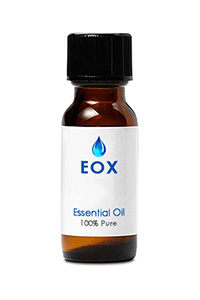New ArrivalsGift Ideas Specials Contact Us

WINTER 5% OFF SALE!
SITEWIDE05
Simply enter the above coupon code and save 5% on your ENTIRE ORDER!
Use PayPal, cash, or checks! NO LIMIT!

Now In: CATEGORIES → Essential Oils → 15ml Bottles → Essential Oil - Labdanum
Botanical name: Cistus ladanifer Color: Pale amber Consistency: Medium-thick liquid Perfumery note: Base Related Planets/Deities: Sun Aroma: Spicy-sweet, somewhat dry, musky, slightly leathery Energetic Properties: Mysterious, masculine, sedating yet uplifting Aromatherapy Properties: A scent with a long, rich history, Labdanum is perhaps most valued in perfumery, in which it is a passable substitute for the much-valued (and, in some countries, banned) ambergris. Also known as 'Rock Rose,' 'Rose of Sharon,' and 'Cistus' oil, labdanum is excellent when combined with frankincense for deep contemplation. Spiritual Uses: The rich, complex, regal smell of Labdanum has helped to establish its long history of spiritual use, dating back at least as far as the Old Testament. As a Sun scent, it is a fine choice for magick or spiritual work involving protection, money, and honoring the Sun and solar deities. Labdanum is a great scent for any sort of meditative work. Blends well with: As Labdanum is a rare essential oil, and blending with other oils is a relatively unknown art. Cistus ladanifer, Labdanum’s source plant, is known to blend well with Bergamot, Cedarwood, Angelica, Frankincense, Cypress, Clary Sage, Lavender, Sandalwood, Patchouli, Pine, and Vetiver. History: From antiquity to the present day, Labdanum has been prized for its musky, sensuous scent. In ancient times, Labdanum was collected by combing the beards and thighs of goats and sheep that had grazed on the cistus shrubs, and many of the false beards worn by the pharaohs of ancient Egypt were made of goats' hair, held together by Labdanum. Some Biblical scholars believe that the mysterious onycha, an ingredient in ketoret, the holy incense mentioned in the Old Testament, was actually Labdanum. Today, Labdanum is greatly valued in the perfume industry for its similarity to the rare -- and very difficult to obtain -- ambergris, which has been banned in some parts of the world, due to the fact that it is prepared from sperm whales, which are an endangered species. |
|
|||||||
|
|||||||





